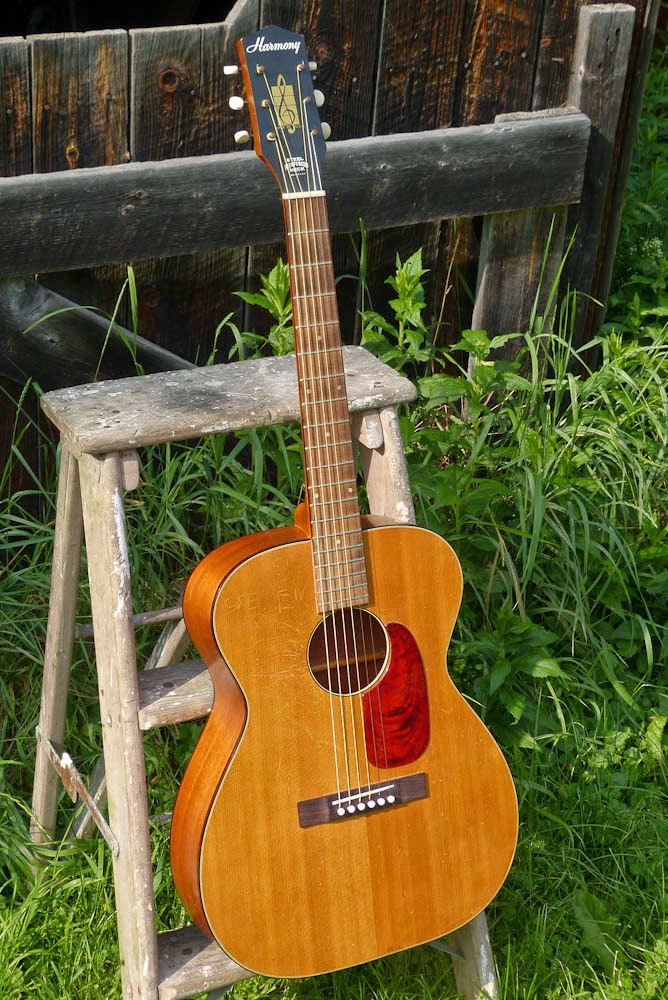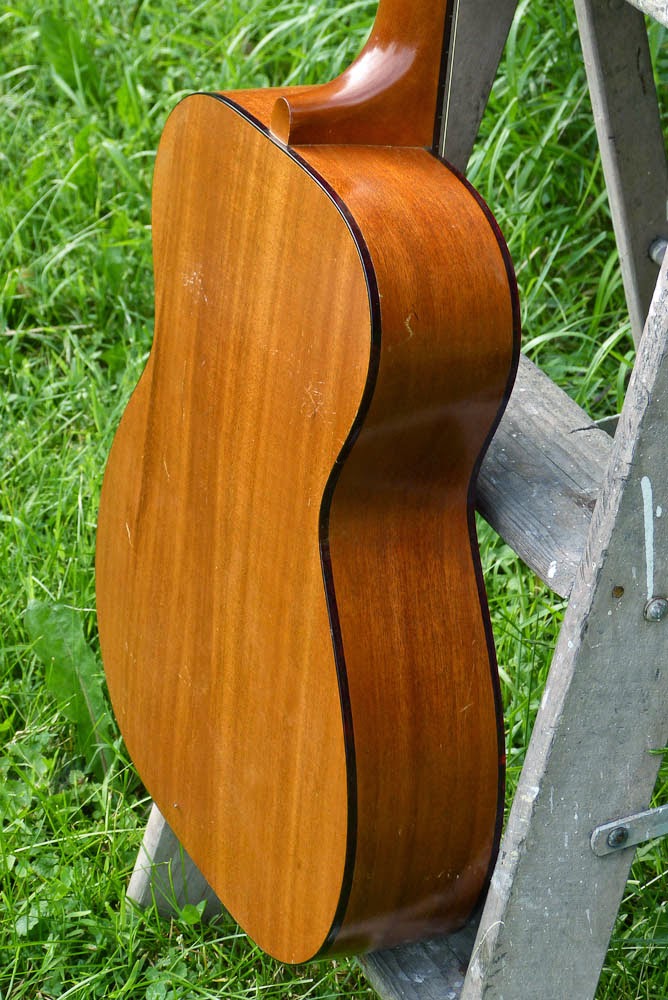c.1965 Harmony H162 000-size Flattop Guitar
H162s like this guy are just plain fun and share the sort of big, airy Harmony sound of their larger protege the Sovereign jumbo but with more focus on crunchy mids and crisp sustain. It's a great sound for country-blues, folk, and heavy-handed rhythm players who need to de-mud themselves.
This one's all-original except for the new bridge/saddle and quite clean except for a bit of light pick-wear and use-wear... and one owner's name (Steven) lightly scratched into the bass upper bout. Bad Steven! It's date-stamped 1965 inside. Work included that bridge, new saddle and vintage white pins, fret level/dress, and setup.
It's a 000-size instrument so it's 15" across the lower bout. It's solid spruce (ladder braced) over solid mahogany sides and a mahogany back. The neck looks like stained maple or poplar and it's got a longer 25 1/2" scale. Because of that and the non-adjustable steel-rod neck I've kept strings to 50w-11 for standard pitch over here.
It may be perfectly fine for 12s but I don't trust them in general on these instruments over time. I split the difference when I use these (or similar Harmony products) for recording or borrow them from the shop for gigs and change the plain 14/11s out for 16/12s to get a beefier treble sound. This came with minor relief in the neck that I dialed out flat during the fret leveling and I sort of expect that in old Harmony necks that might've been left at tension for too long in storage.
Original plastic nut... and the classic sprayed-on script.
This has a radiused rosewood board with decent-sized frets. The dots are faux-MOP. Note the "chatter" from Harmony's planing equipment: this started to happen in the early 40s on Harmony guitars and it starts to get ever more prevalent until the 60s and 70s where you can really start to see it pretty well like on this guy. I'm assuming the same tired piece of equipment was used?
I once had a similar-period H165 guitar sent back to me because the new owner claimed that someone must've sanded the board at one point with 80-grit! I tried to explain that you see it on every Harmony guitar since after WWII and the fact that the frets and board hadn't been touched until I'd leveled and dressed them but he was not convinced. Too bad! The next owner, of course, fell in love with the thing as it rightly deserved...
This is a new rosewood bridge that I popped on including a new compensated bone saddle. The original bridge was "alright" but like the usual Harmony fare from this time it was bolted on with just a tiny amount of glue (and, hence, lifting) and the saddle (plastic) was glued in which meant minor height adjustment mods would be frustrating to perform in the future. This new one is slightly smaller overall (possible due to the tiny glue footprint from before) and much more practical.
I'm never quite sure if the backs on these 60s guitars are solid or not. My guess is that it's unlikely since I don't see any seams but I may be wrong.
Original tuners plus a small amount of lube = working fine.
The neck didn't need a reset... amazingly... and who can argue with tortoise binding?
The original, foam-beset, chip case is also included.
















Comments